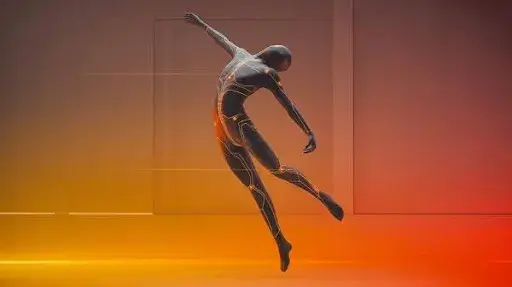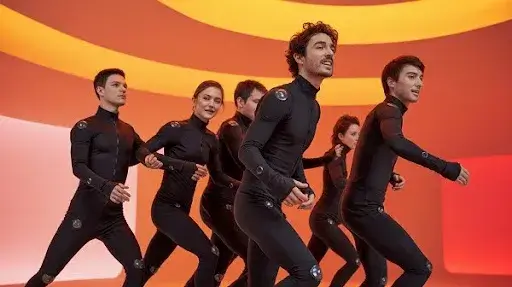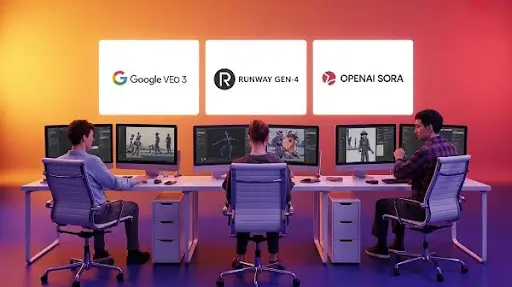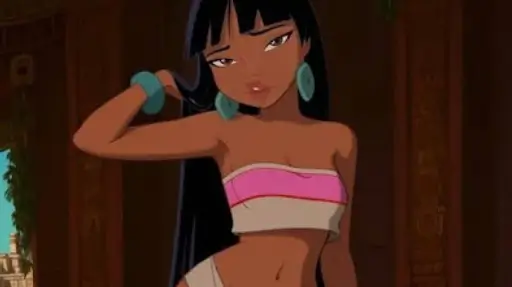Cinema has always been shaped by innovation. Each breakthrough has transformed storytelling — Technicolor brought vibrant worlds to the screen, green screens unlocked endless backdrops, and motion capture introduced a way to create characters once thought impossible. But what exactly is mocap, and how does it bring unforgettable characters to life? Let’s explore.
What does mocap mean?
Motion capture, often shortened to mocap, is a branch of visual effects (VFX) that focuses on recording an actor’s movements and translating them into digital characters. Unlike traditional VFX techniques, mocap directly maps physical performance into a CGI framework, capturing everything from subtle facial expressions to complex body movements.
How does mocap work?
At its core, mocap technology uses sensors and cameras to track an actor’s motion in real time. This data is then applied to a digital model, allowing filmmakers to blend authentic human performance with computer-generated imagery. The result is a seamless mix of realism and creativity — something we at Prolific Studio specialize in when bringing stories to life through animation and VFX.
Famous characters brought to life with mocap
- Thanos — Avengers: Endgame
- Smaug — The Hobbit: The Desolation of Smaug
- Caesar — Rise of the Planet of the Apes
From menacing villains to breathtaking creatures, mocap has redefined what’s possible in filmmaking. And as technology continues to evolve, the line between human performance and digital creation grows thinner — opening new doors for storytellers everywhere.
The History of Motion Capture
The origins of motion capture can be traced back to biomechanics, where it was first developed as a way to study the movement and function of the human body. Over time, the technology evolved from being a scientific tool into one of the most influential creative assets in entertainment.
Creatively, motion capture owes much to rotoscoping—a classic animation technique where artists traced over filmed footage to create realistic movement. Disney used this approach in early films like Snow White and the Seven Dwarfs, where actors were recorded performing dances and gestures that animators could then translate into lifelike animated characters.
By the 1990s, motion capture had moved firmly into the world of video games, enabling developers to capture an actor’s performance and bring greater realism to digital characters. Around the same time, filmmakers began experimenting with the technology. One of the most groundbreaking early examples was Peter Jackson’s The Lord of the Rings: The Two Towers (2002), where Andy Serkis’s legendary performance as Gollum showed the world what CGI characters could achieve with motion capture.
The technology advanced even further with James Cameron’s Avatar. Before this film, motion capture was largely confined to studios due to technical limitations. Avatar introduced innovations that allowed mocap actors to perform directly on set with other cast members, blending raw human emotion with digital artistry. This leap forward set the standard for the seamless CGI characters audiences expect in cinema today.
Now, motion capture is a cornerstone of Hollywood filmmaking, powering some of the biggest blockbusters on the planet. At Prolific Studio, we continue to explore and harness the full potential of mocap technology, blending creativity with innovation to bring stories and characters to life in ways that captivate audiences around the world.
Components of Motion Capture
Motion capture, often called mocap, is a technology-driven process that has revolutionized filmmaking, gaming, and animation. Over the years, this technology has evolved to not only track movement but also enhance an actor’s performance, helping bring digital characters to life with stunning realism. At Prolific Studio, we specialize in turning these performances into unforgettable characters.
Mocap Suit
The foundation of motion capture begins with the mocap suit. These high-tech suits are equipped with 15–20 sensors that monitor an actor’s body movement, gravitational pull, and rotation. Every detail of the performance is captured and transmitted in real-time to specialized software. This ensures that the smallest gestures—from a leap to a head tilt—are faithfully recorded.
Head-Mounted Camera
Beyond body movement, motion capture also dives deep into the emotional expressions of an actor. Using a head-mounted camera, the system records the finest details—like a subtle lip quiver, a raised eyebrow, or a fleeting eye shift. This technology has been crucial in creating some of cinema’s most iconic characters, including Caesar in Planet of the Apes and Thanos in Avengers: Infinity War and Endgame. By preserving every nuance, mocap ensures that digital characters feel alive and authentic.
Motion Capture Software
Once the data is collected, the real magic happens during post-production. Motion capture software such as Autodesk MotionBuilder or 3DS Max allows VFX teams to refine the raw performance and add layers of detail. The result? Fully realized CGI characters that feel both believable and emotionally compelling.
Why It Matters
Motion capture isn’t just a tool—it’s a game-changer. It empowers filmmakers and animators to push creative boundaries, producing characters that are rich in detail and emotion. At Prolific Studio, we harness the full potential of mocap technology to craft stories and characters that resonate with audiences worldwide.









